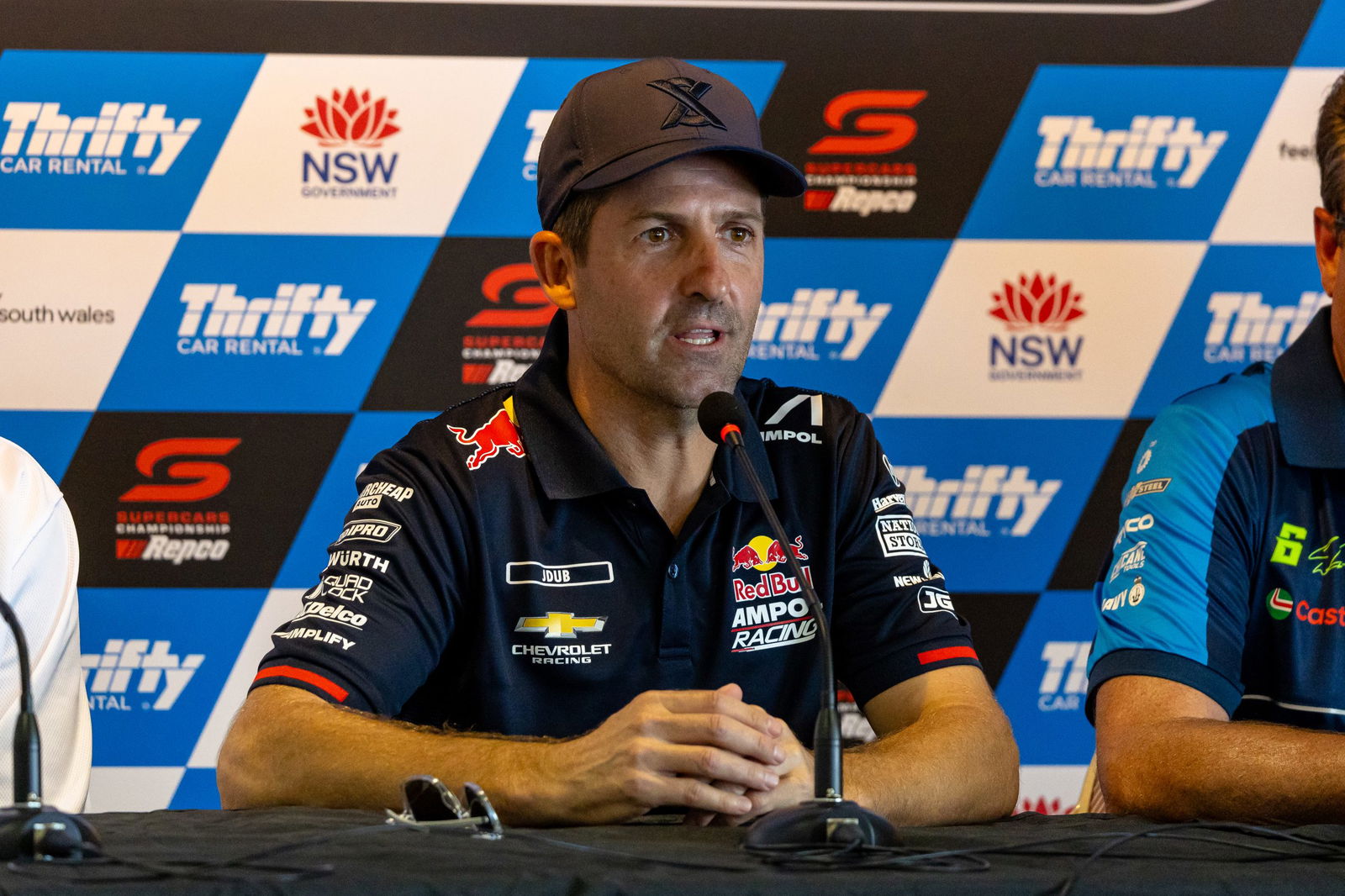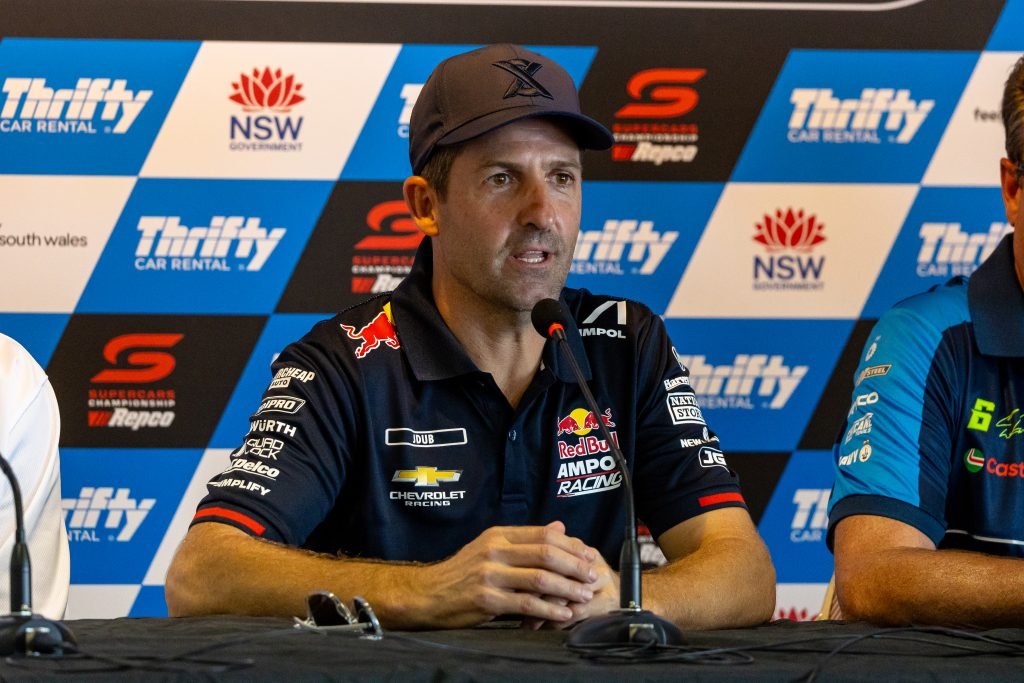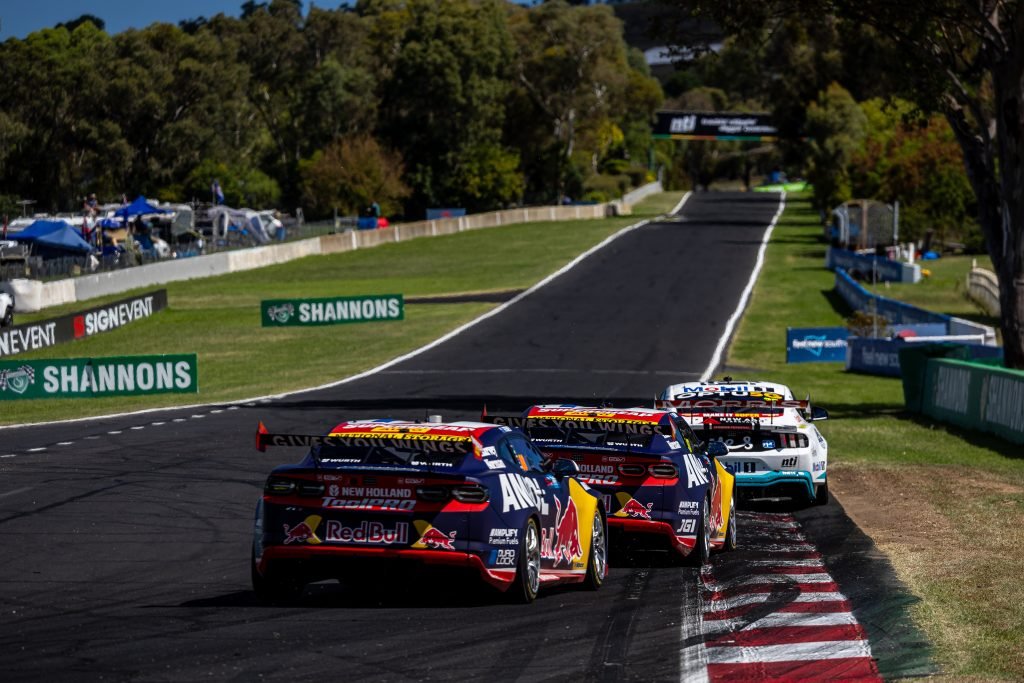

Supercars undertook historic category wind tunnel testing in the off-season in order to ensure aerodynamic parity between the Chevrolet Camaro and the Ford Mustang.
There is broadly agreement that aero parity has indeed been achieved although some are questioning whether the engines are yet equal in performance, even if they acknowledge that the Ford is at least much closer to the Chevrolet than it was in 2023.
Triple Eight was primarily responsible for the development of the Gen3 race cars and, as the Chevrolet homologation team, has continued to shoulder a heavy burden through multiple VCATs, multiple wind tunnel tests, and ongoing engine work – all of which was undertaken because of an actual or perceived performance deficit of the Mustang.
While the Red Bull Ampol Camaros won both races and took out both pole positions at the Bathurst 500, Walkinshaw Andretti United’s Chaz Mostert came very close to grabbing victory in Race 2, from the outside of the front row, and also stood on the podium after Race 1.
While his Mobil 1 Optus Mustang was especially slow down Conrod Straight, that looked at least predominantly set-up-influenced based on how fast he was across the top.
Mostert set the fastest lap in Race 1 and finished 1.5535s away from victory after 40 Safety Car-free laps in Race 2.
Whincup referred to that when asked if he had a read on the relative performance of the Camaro and Mustang after the first 500km of racing in 2024.
“No, we don’t, because the differences in sporting parity are massive,” he told Speedcafe.
“Chaz was so fast down the hill [and] we couldn’t touch him there. His car was just dialled in to come down the hill and ours was dialled in at the bottom of the track.

“It’s quite good how different the cars were; they both achieve a similar speed with very, very different set-ups.
“That’s what I’m passionate that this sport needs, that this category needs.
“We don’t want all drivers driving the same or all cars set-up the same and built the same.
“You want those differences and we had that today, which was fantastic.”
Asked about next steps on the engine front, Whincup declared he will not be talking about parity anymore.
“I’m sick of talking about it, so I’m not talking about it anymore,” he replied.
“From what I could see, the cars couldn’t look any more even.
“It’s definitely time to move on.”
As reported by Speedcafe over the Thrifty Bathurst 500 weekend, Supercars’ contract with its competitors with respect to technical parity has made its way from the confidential Teams Racing Charter and into the public domain by way of changes to Rule A1.4 of the category’s Operations Manual.
Notably, Rule A1.4.6 states:
Supercars is dependent upon the input of the individual Homologation Teams and cannot be responsible for any of those Teams presenting cars and/or engines for homologation that are uncompetitive. Supercars will offer guidance to help Homologation Teams whenever reasonably possible.
Rule A1.4.4 has been altered by way of an addition which draws a contrast between technical parity and sporting parity.
Regarding “equalisation of the abilities of participating Drivers and/or Teams,” it notes that, “such equalisation could be, and is in some categories, defined as sporting parity.”
Meanwhile, Speedcafe has uncovered further detail on the changes which have been made to the Ford engine over the off-season, since the takeover of the programme by DJR, including an upgraded fuel rail to help rectify injector fitment issues.
The 2024 season resumes with the Melbourne SuperSprint at Albert Park on March 21-24.



















Discussion about this post